Have you ever wondered how to go about creating a cottage garden with native plants?
The idea of a cosy cottage garden, with herbaceous borders of annuals and perennials against a backdrop of shrubs and (maybe) a small tree or two, has always been popular. Nowadays smaller gardens continue to make this style popular.
In this story, we share which plants might work for creating a native cottage garden.
The outcome will be a more beautiful garden, as well as one that is more sustainable, more attractive to local fauna and insects and less chance of weeds escaping into the bush.

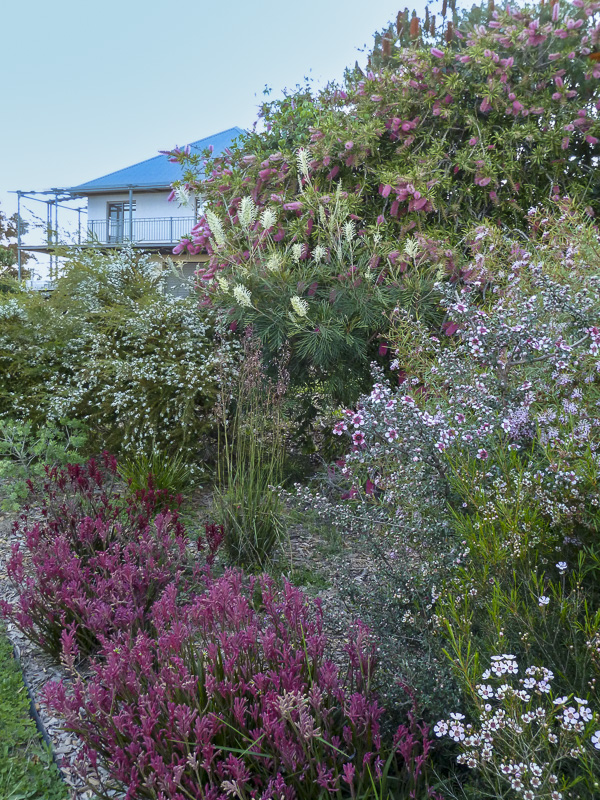
What is a cottage garden?
Cottage gardens have existed for thousands of years. There was a resurgence in the late 1800s, a reaction to highly formal gardens of those times. Some believe they originated in the 1300s when food became scarce requiring people to become more self sufficient. Small plots of land were dedicated to growing vegetables, fruit, herbs and flowers.
Cottage gardens can nowadays be quite large, as evidenced by Monet’s garden in France, with its narrow meandering pathways and sprawling and highly colourful plants spilling over.
Features of cottage gardens
In creating a native cottage garden, there are a few features to be aware of.
- Mass plantings of low growing shrubs capitalising on colour and texture
- Plants all tangled together and co-mingling
- Seasonal displays of colour – these gardens are a riot of colour for much of the year
- Practical and have a sense of ‘organised disarray’, as Diana Snape put it
Planting an Australian native cottage garden
Australia has more native plants than any other country in the world. There are many low growing annual and perennial Australian plants and shrubs that can be used in a massed display for creating a cottage garden. There is many colours and we are fortunate to have an abundance of blues to choose from.
The principles of colour
You can use a colour wheel to choose colour harmonies or just go for a riot of colour. The choice is all yours and will be reflected in the character of your garden. Many books have been written on using colour in the garden. Colour is instrumental in creating the mood in your garden.
Below is a continuous colour wheel.
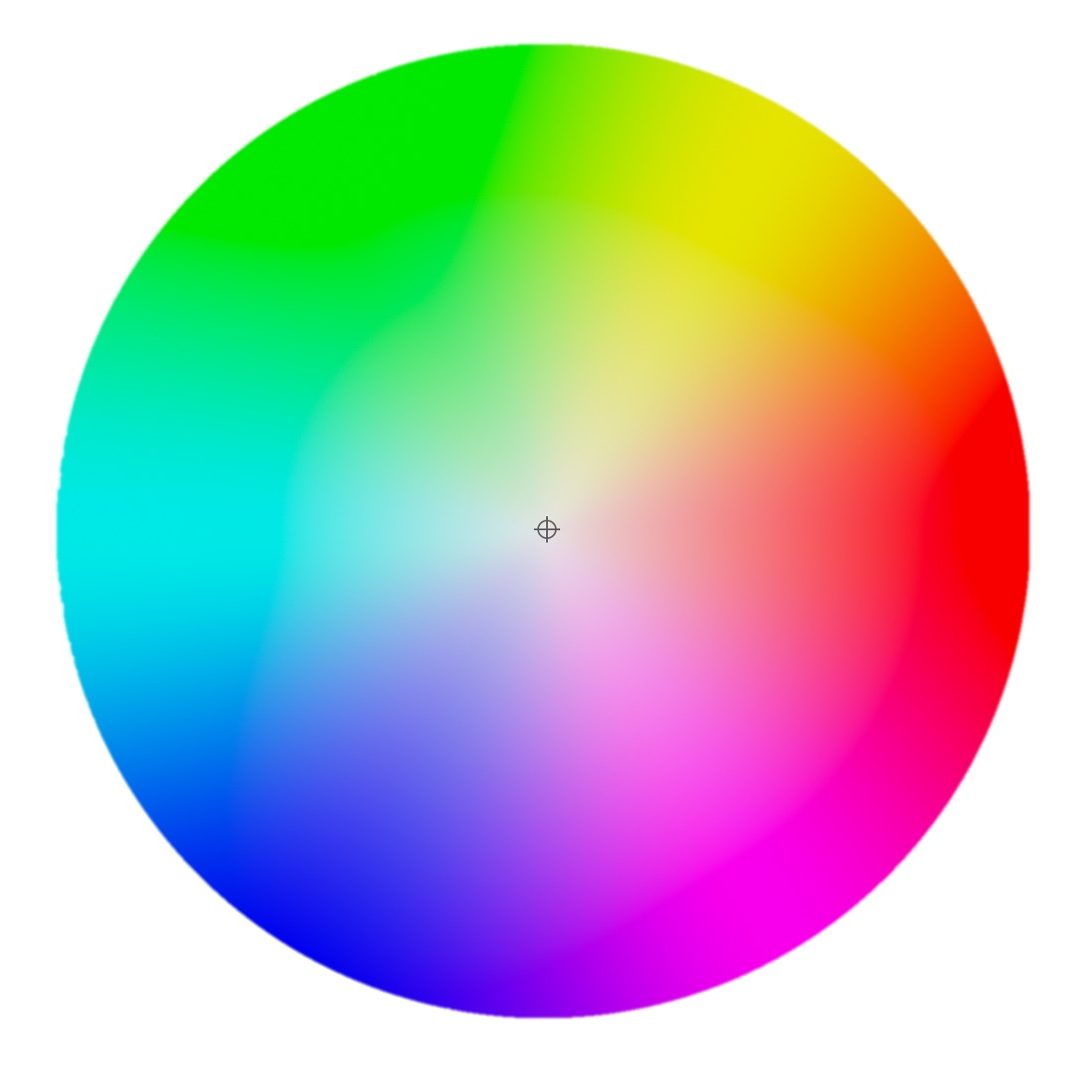
When choosing flower colours here are a few points:
- Warm colours – red, pink, orange and yellow. These give a sense of fun and activity. They come to the foreground and thus appear larger.
- Cool colours – blues, greens and some blue-violets give a feeling of space and serenity; they tend to recede from the eye and can appear smaller.
- Neutral colours – white, grey and black. Grey is an excellent ‘linking’colour. Be careful with white and black, both can appear as holes or spaces in a colour scheme. Both work well as highlighters of other colours.
- Limit the number of contrasting colours. They are high impact so they should be used sparingly to create a focal point in your garden.
- Use more of the harmonious colours. They lie next to each other on the colour wheel. They are closely related on the colour wheel and do not clash.
Possible plants for your garden
To make it easier to choose the colour palette of your garden, here are a small selection of some suitable plants by their flower colour that might be useful in creating a native cottage garden. Ensure you check each plant to ensure it will work in your garden, in your soil and climate.
We have grouped plants by colour either flower or foliage. Most of these plants are no larger than 1.5m.
To find more information about plants that work well as groundcovers or shrubs under 1m, there are several databases you might find useful.
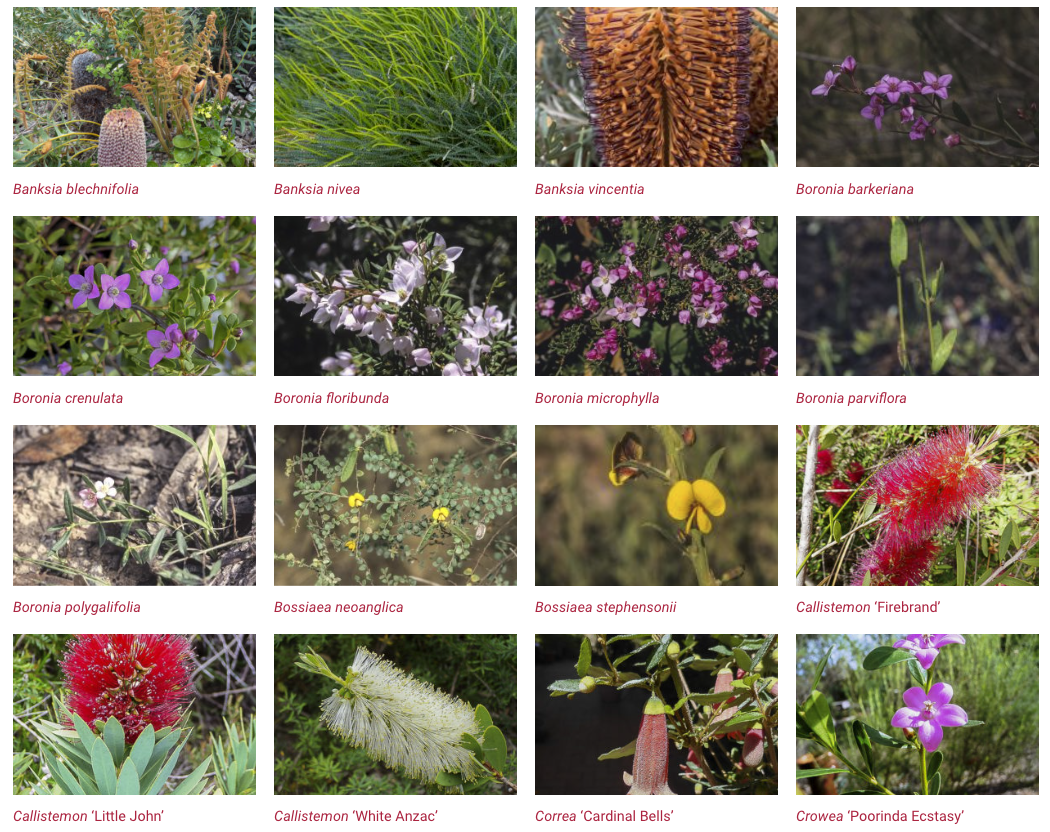
Australian Plants Society NSW plant database. See Ground covers and Shrubs under 1m.

ANPSA Plant profiles – ie on this website

Australian Native Plants Society Canberra has a number of profiles:
https://nativeplantscbr.com.au/articles/?category=plantshttps://nativeplantscbr.com.au/articles/?category=plants
Warm colours
Red flowers for a native cottage garden
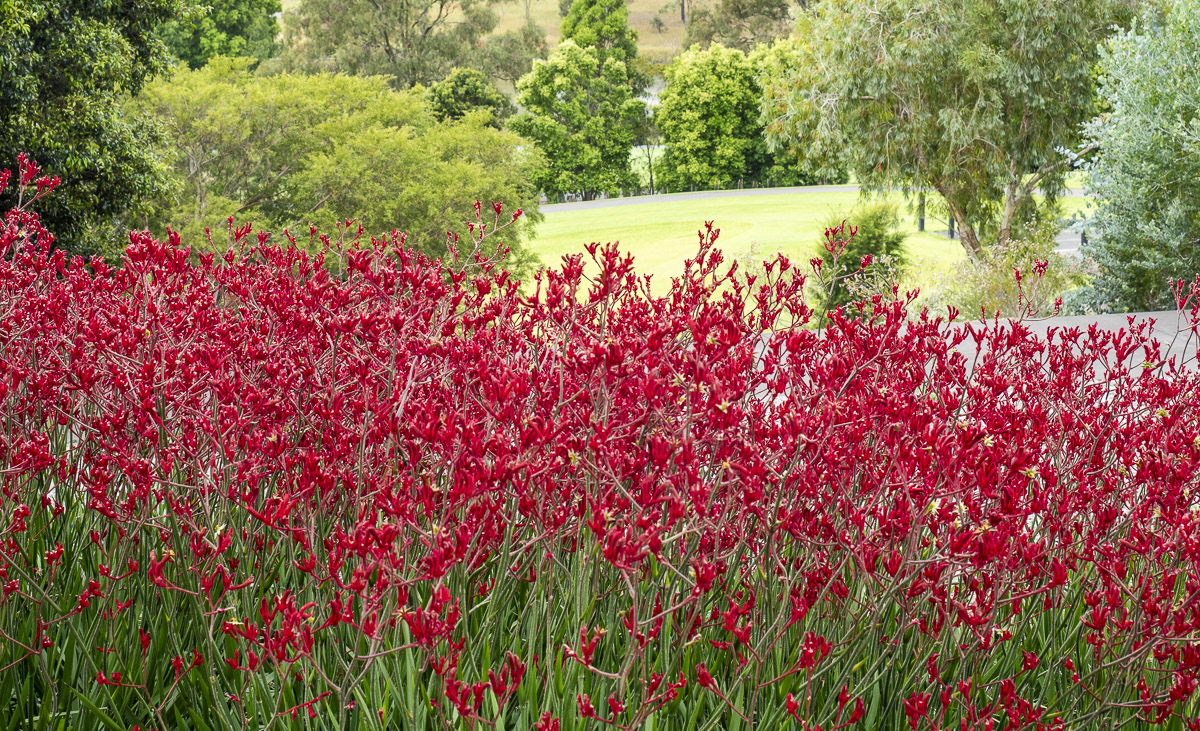
Anigozanthus species, Kangaroo Paws – Many forms available. There are three height ranges to select from small approx 600mm high (flower all year), medium to approx 1.2m and tall 1.8m. Kangaroo paws come in many colours, and are not repeated in each section. Colours include yellow, orange, green, mauve, blue, pink.

Callistemon ‘Little John’ – Rounded shrub with grey green leaves, and red bottlebrush flowers in spring. image Heather Miles
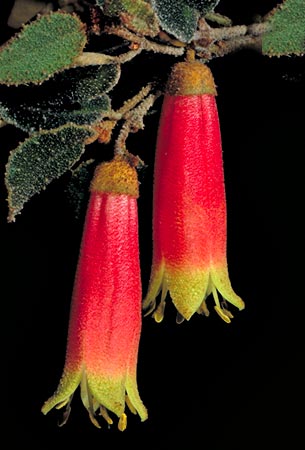
Correa reflexa – Flowers in autumn, to one metre high, good for attracting birds.
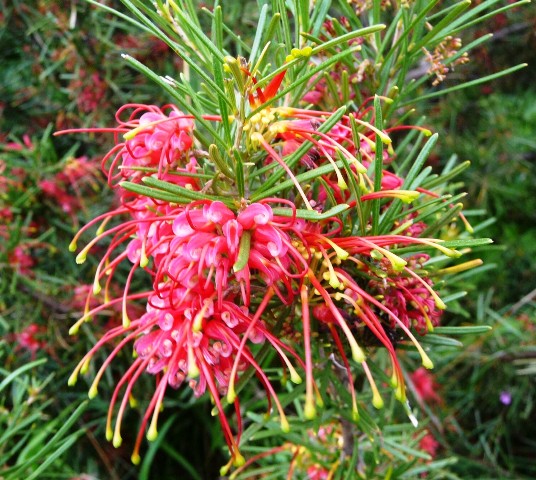
Grevillea pinaster – Pendulous flowers in winter/spring, fine attractive foliage, reasonable hardy, to one metre high x two metres wide. Image Warren Sheather
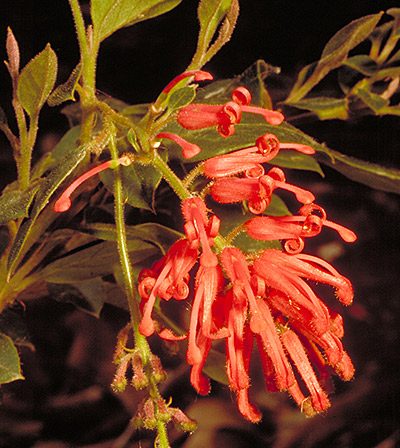
Grevillea rhyolitica – Pendulous flowers all year, full sun to medium shade, prefers some moisture, to one metre high.
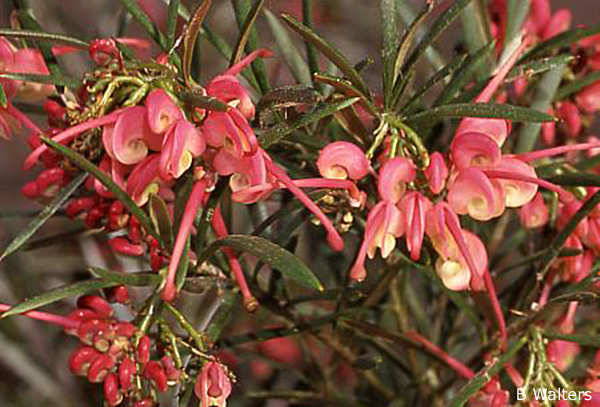
Grevillea rosmarinifolia – Spider flowers in spring, to one metre high, will take some shade.
Orange flowers for a native cottage garden

Banksia blechnifolia – Orange/brown flower spikes in spring, is a spreading prostrate plant with runners bearing upright leaves to 30cm high. Image Brian Walters

Chorizema cordatum – Brilliant orange/pink flowers in spring, outstanding in shade. There is a yellow flowering form. Image Heather Miles.

Lechenaultia formosa (orange forms) – To 30cm high, needs well drained raised bed and a sunny position, difficult. Image Brian Walters
Yellow flowers for a native cottage garden

Acacia myrtifolia – Pale yellow flowers, in late winter, Shrub to one metre high, will take some shade. image Alan Fairley
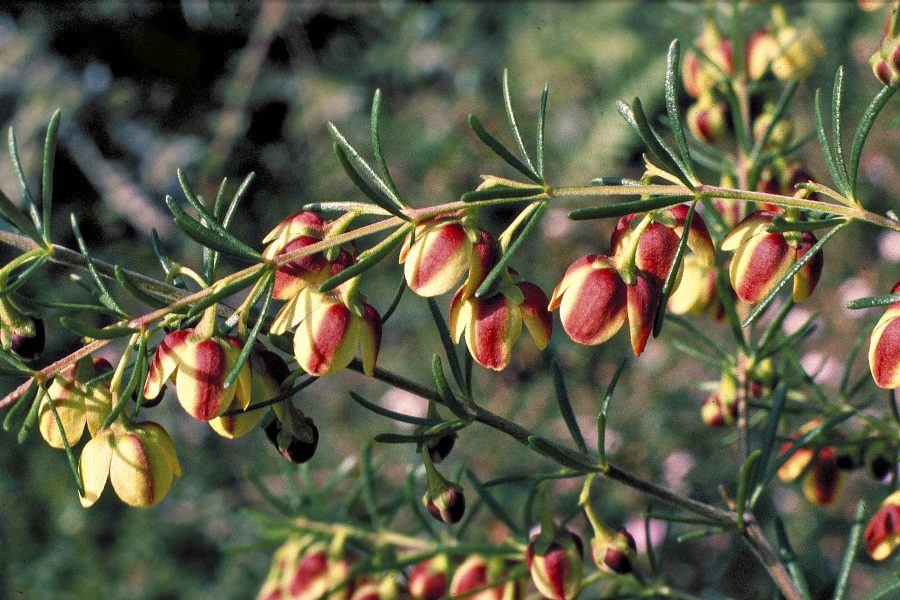
Boronia megastigma lutea (yellow flowers) and Boronia megastigma (brown and yellow flowers) – Highly perfumed flowers in spring, prefers some shade and moisture, to one metre high, treat as an annual in Sydney. Image Brian Walters

Xerochrysum bracteatum ‘Diamond Head’ – Bright yellow paper daisy flowers in spring/summer, small to 0.5m high and one metre wide. Image Brian Walters

Bulbine bulbosa – Bears small star like flowers on succulent stems about 50cm high, a bulbous plant that self seeds freely. image Lawrie Smith

Eutaxia obovata – Yellow pea flowers in spring, hardy, prune after flowering, to one metre high. image Heather Miles

Goodenia ovata – Bright buttercup flowers in autumn/spring, hardy and excellent in a shady spot, to one metre high. image Heather Miles

Hibbertia obtusifolia – Bright flowers in spring/summer, groundcover to one metre, hardy. Image Alan Fairley
Hibbertia pendunculata – Bright flowers in summer, matting groundcover to one metre, very hardy.

Senna artemisioides – Yellow pea flowers, in late winter, attractive grey foliage, grows to one metre high. Image Brian Walters
Pink flowers for a native cottage garden
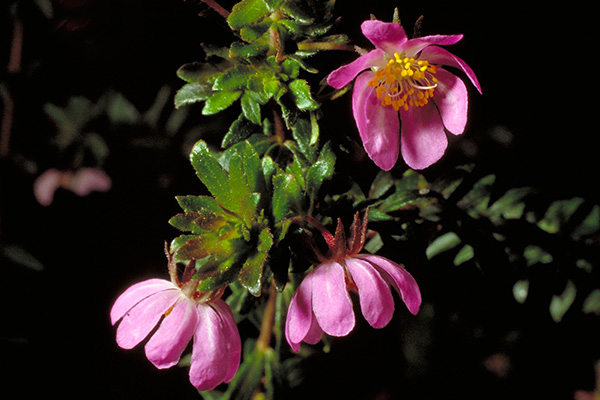
Bauera rubioides – Flowers in spring, to one metre high, hardy, prefers some moisture and will take some shade.

Brachyscome formosa – Can flower all year, small suckering ground cover, likes some moisture.
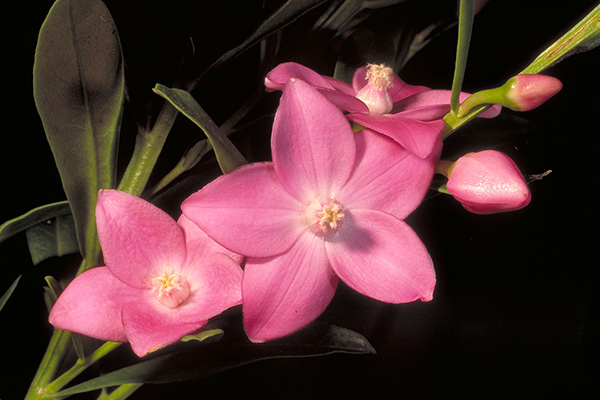
Crowea saligna – Bright star flowers in autumn/winter, very attractive to 1.2 metres high. Excellent as a cut flower.

Grevillea sericea – Flowers in winter/spring, red and purple flowering forms are available, to 1.2m high.

Indigofera australis – Sprays of purple/pink pea flowers in spring, needs pruning to keep compact average height 2 metres. Flowers better in semi shade. very hardy.
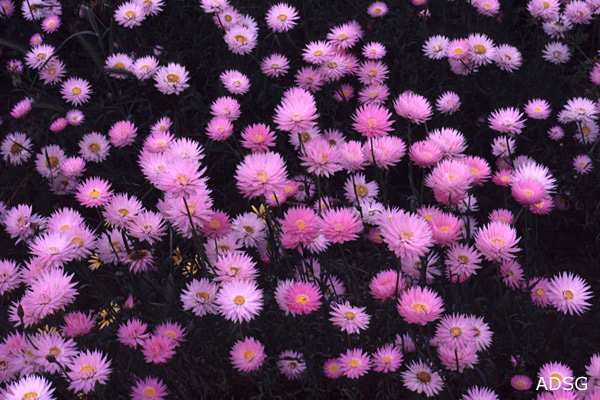
Rhodanthe chlorocephala – Paper daisy flowers in spring, an annual which self seeds. Usually grown from direct sown seeds. Image Brian Walters
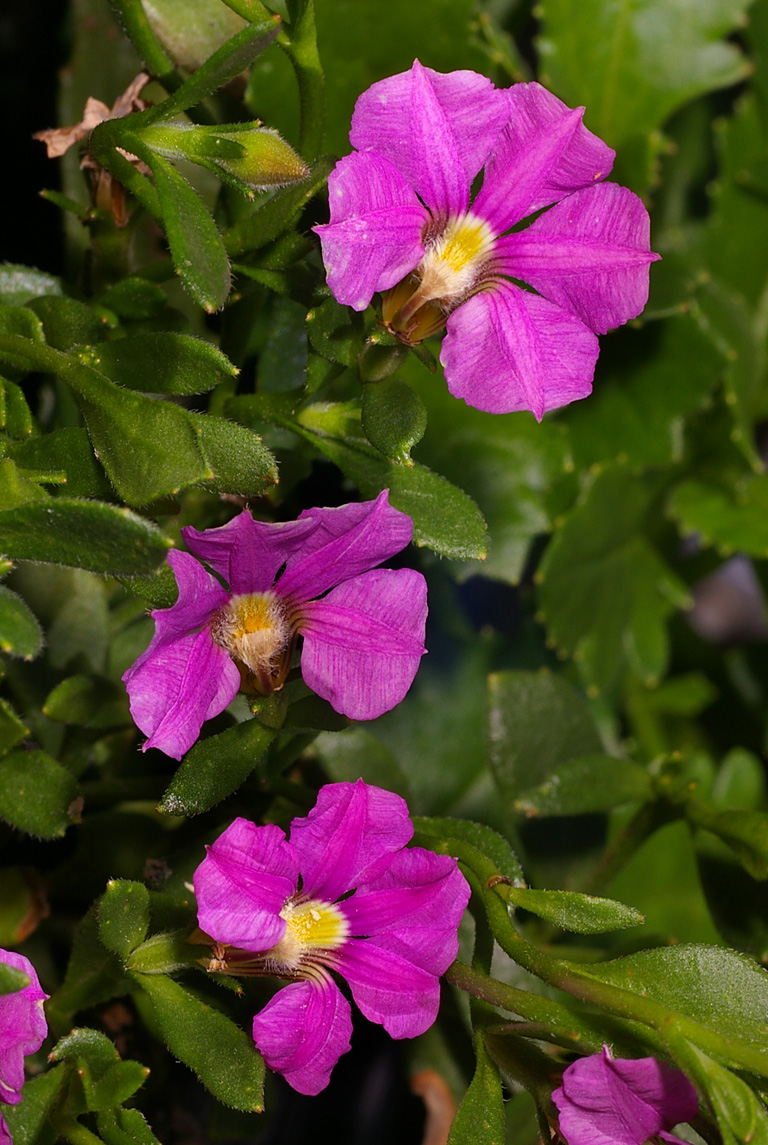
Scaevola aemula – Small pink to mauve flowers in summer, a ground cover to one metre wide, sunny position with good drainage, hardy. There are many forms available and some have large purple flowers.
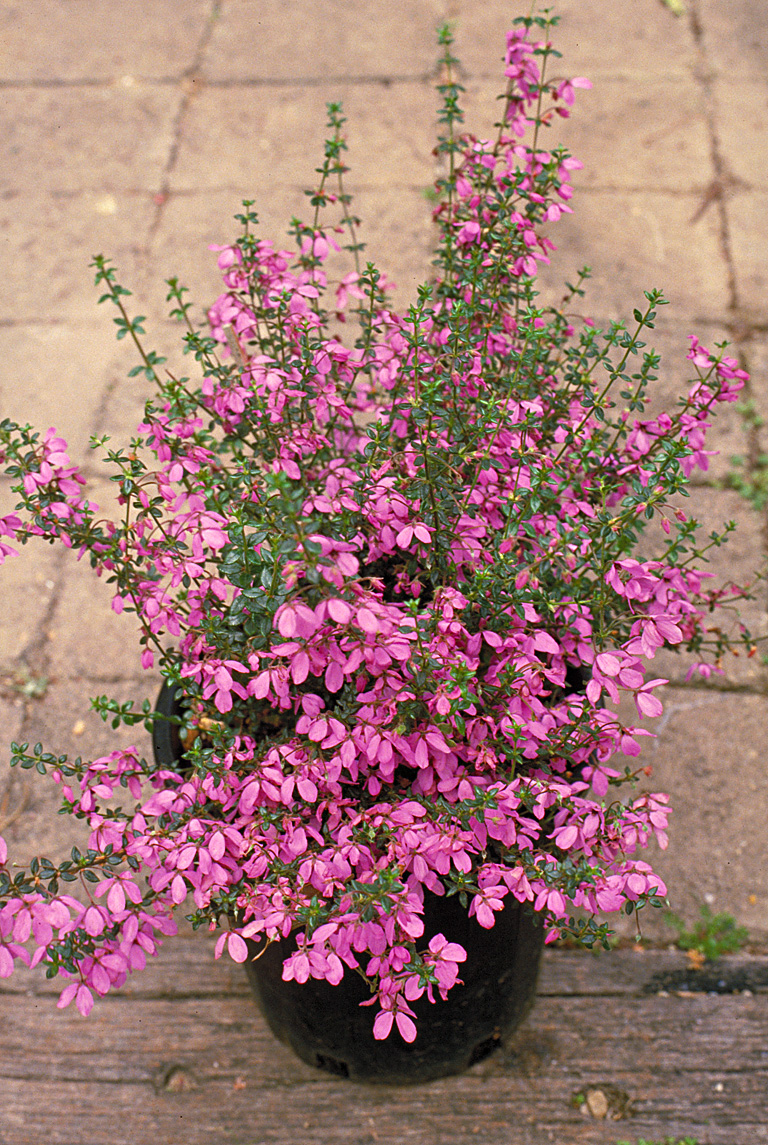
Tetratheca thymifolia – Masses of pink bell shaped flowers in spring, needs well drained shady spot, shrub to 40cm high.
Cool colours
Blue, purple and mauve flowers for a native cottage garden

Brachycome angustifolia – Mauve flowers all year, small suckering ground cover, very hardy and will take some shade. There is a pink form as well.
Brachycome multifida – This has mauve flowers all year, is a small ground cover, and is best in full sun with some moisture. Many forms are available.
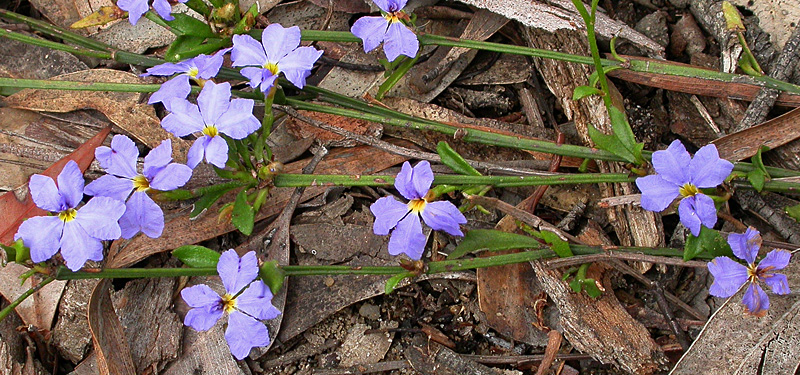
Damperia stricta – Purple flowers summer/autumn, suckering ground cover to 50cm, takes some shade. Image Brian Walters

Dianella revoluta, D. caerulea and D. longiflolia – Both have flax like leaves and bright blue flowers with prominate yellow anthers on branched spikes. Grow to one metre high, followed by bright blue globular fruits. Hardy plants.

Halgania cyanea – Brilliant blue flowers in winter/spring, suckers, takes some shade and dampness, to 0.5 metres high.
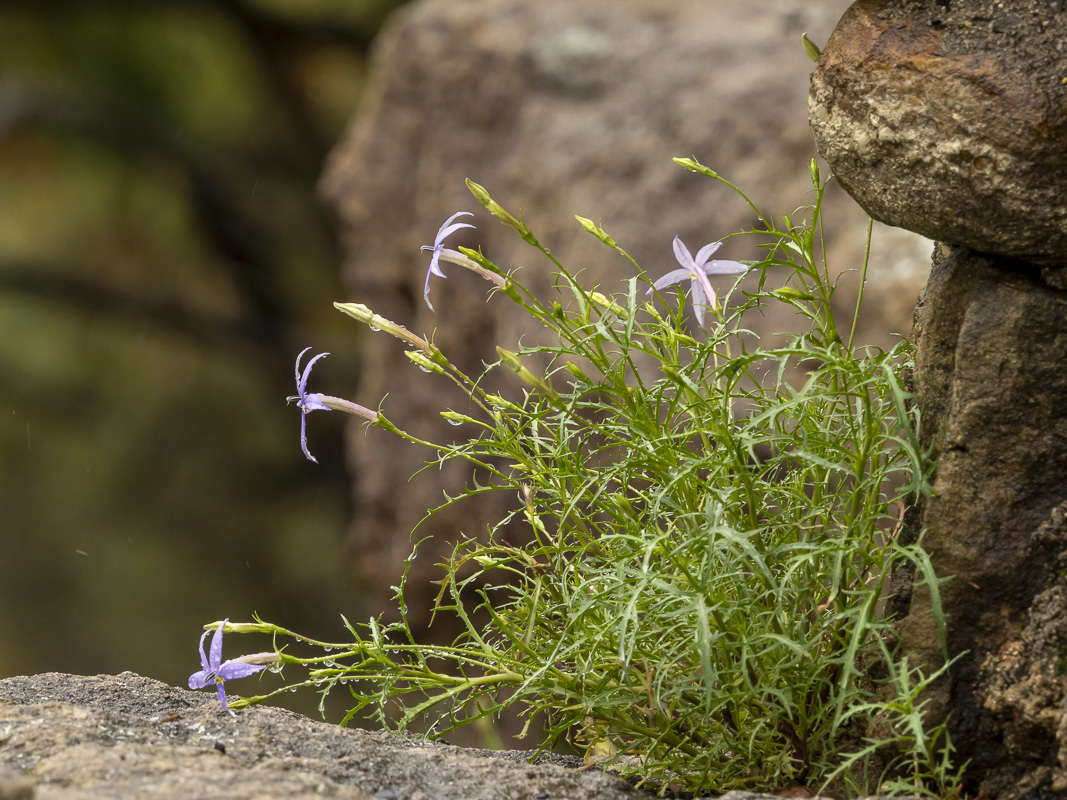
Isotoma axillaris – Brilliant blue star shaped flowers spring/summer, self seeds, takes some shade to 0.3 metre high. image Heather Miles
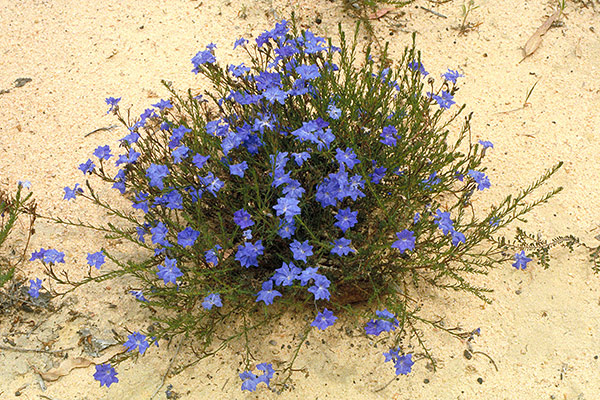
Lechenaultia biloba – Soft blue to dark blue are a few of the many flowering forms available, To 60cm high , needs well drained raised bed, difficult, needs sunny spot.

Melaleuca violacea – Mauve/purple flowers in spring, sunny position with full drainage
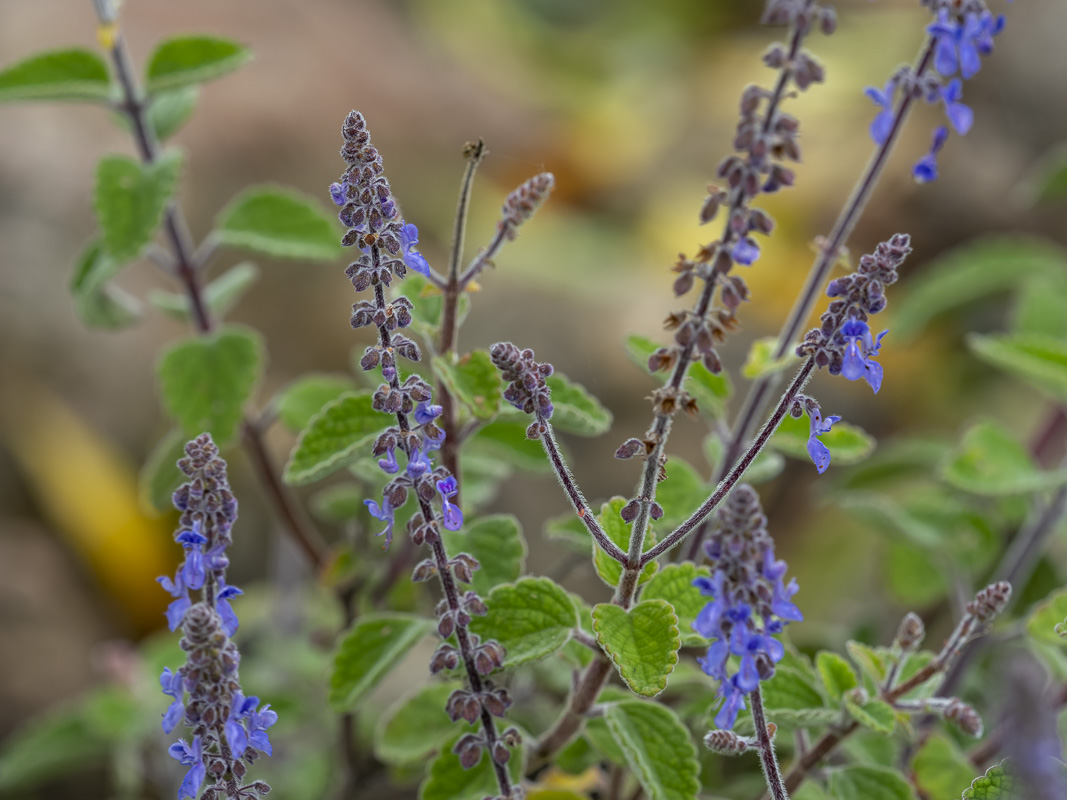
Plectranthus argentatum – Also consider P. graveolens, P. suaveolens and P. parviflorus. Very vigorous suckering herbaceous plant to one metre high. Blue flowers with grey velvety foliage. Prefers shade and is frost tender. Image Heather Miles
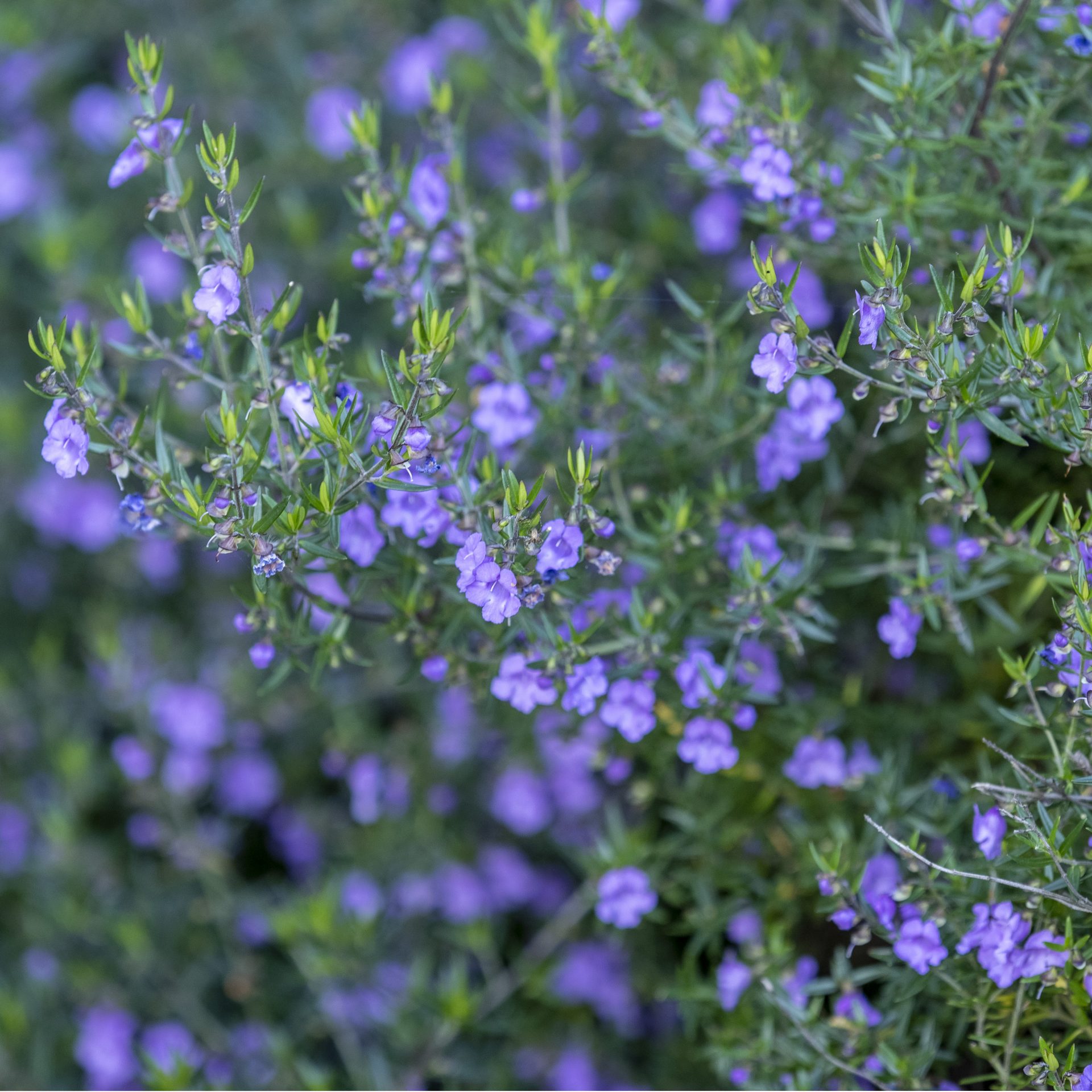
Prostanthera phylicifolia – Deep purple flowers in spring, to 1.2 metre high, excellent in deep shade. image Heather Miles
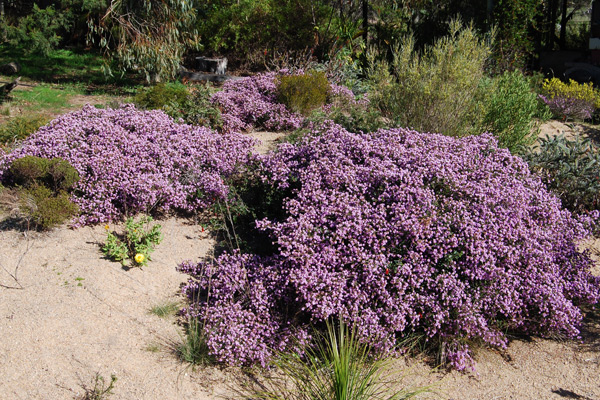
Thryptomene saxicola – Small soft mauve flowers winter/spring, best in sunny spot, to one metre high, okay for clay.
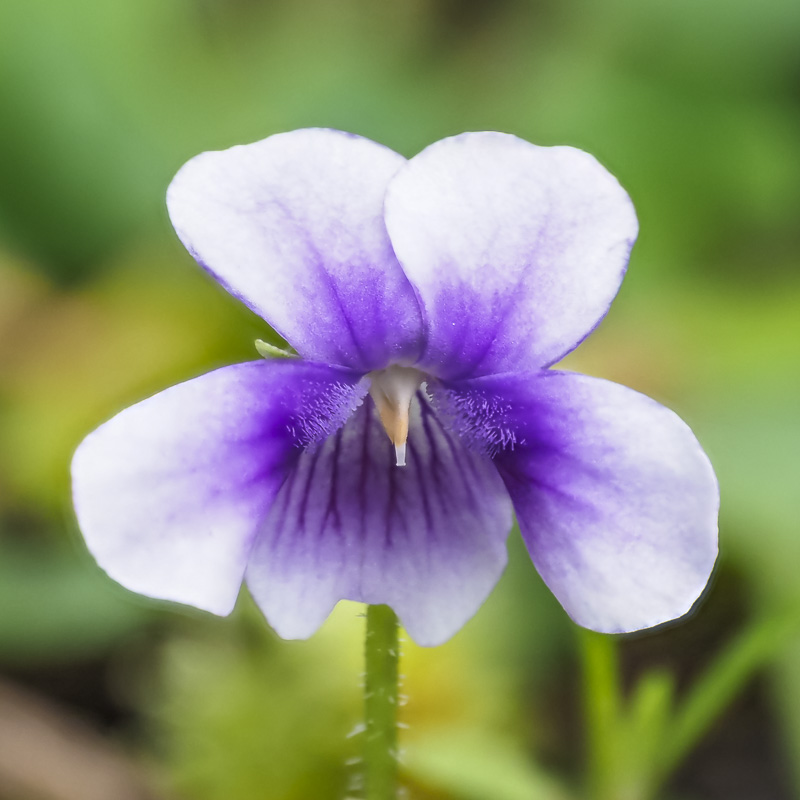
Viola hederacea – White and purple flowers on stems to 9 cms, stoloniferous plants forming dense mats in damp places. image Heather Miles
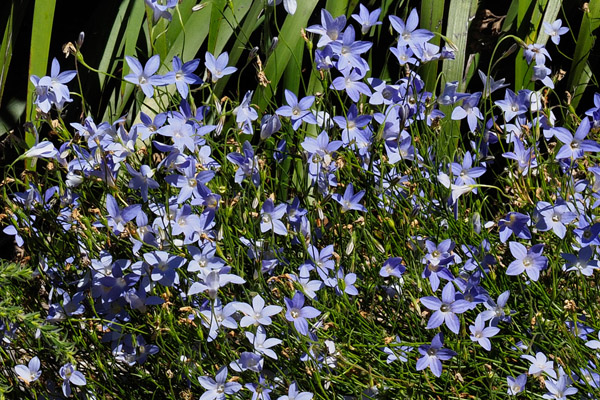
Wahlenbergia stricta – Masses of light blue flowers on slender stems, clumps to 40cm high, needs a well drained sunny position.
White, cream and grey
White or Cream Flowers for a native cottage garden

Austromyrtus dulcis – Flowers in summer, grey edible berries in autumn, spreading shrub to one metre. image Warren Sheather
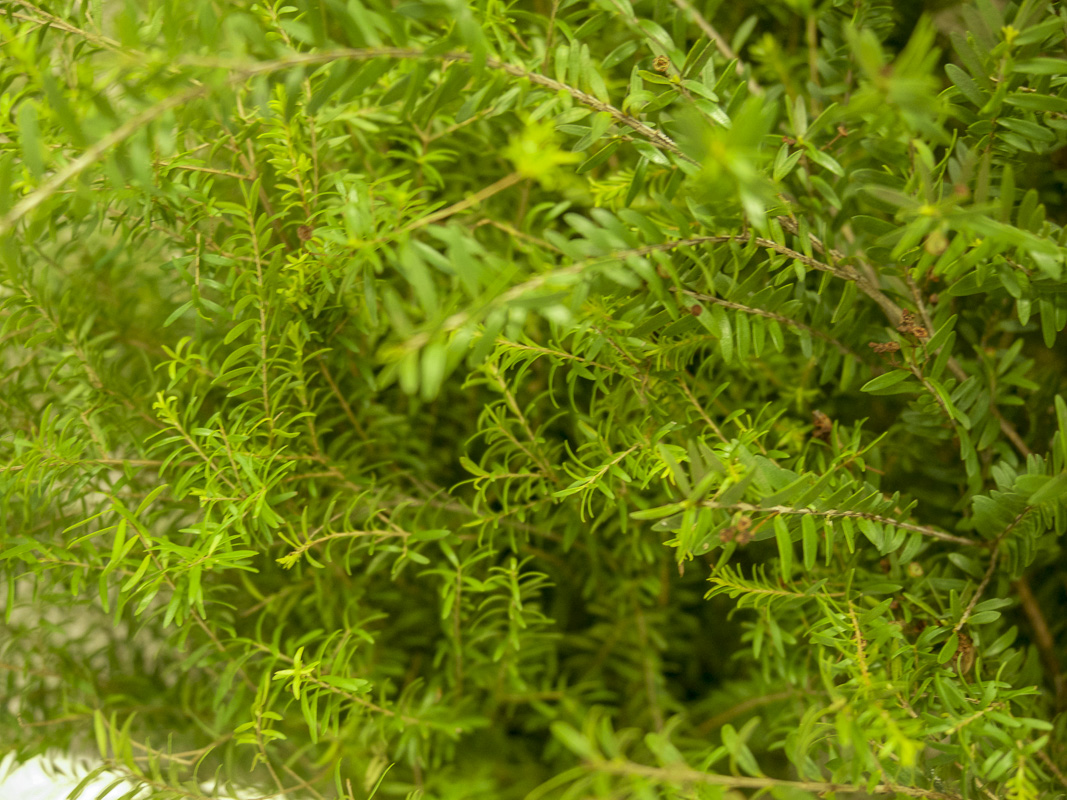
Sannantha similis – Flowers in summer, to 0.5 metre high, hardy and will take some moisture and shade. image Heather Miles

Correa alba – Bell shaped flowers in autumn, to one metre, good for attracting birds and is hardy in a shady spot. image Heather Miles
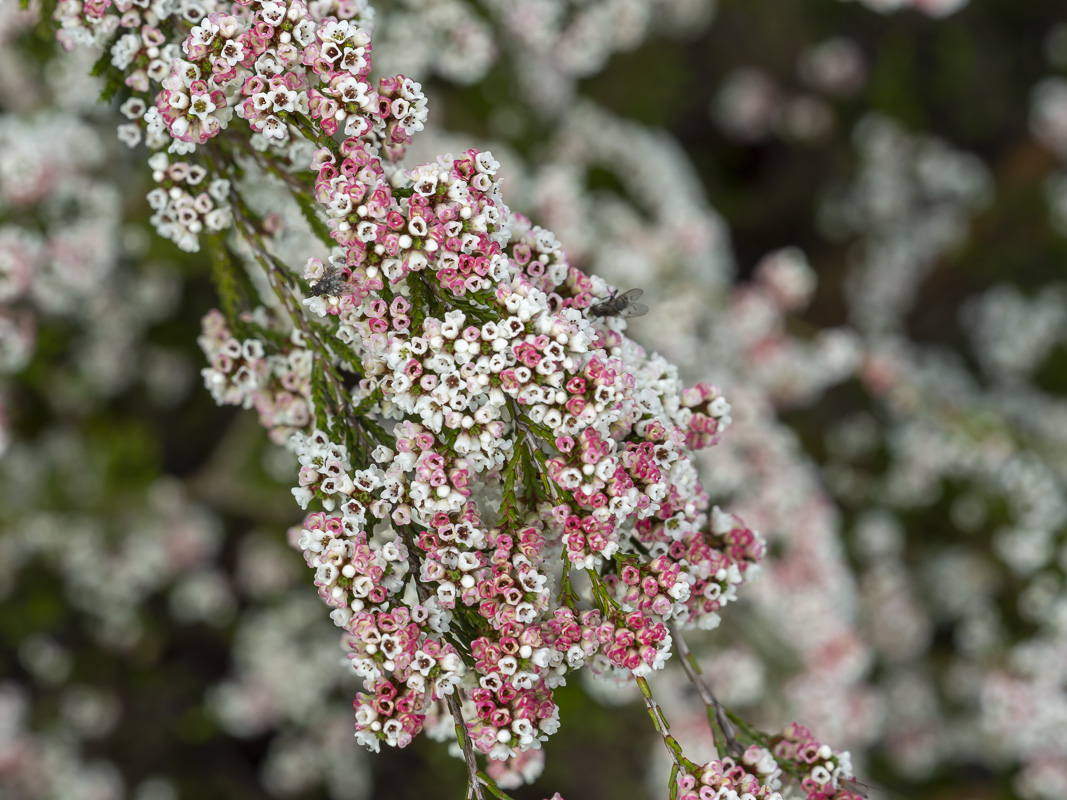
Micromyrtus ciliata – Masses of tiny flowers turning pink in winter/spring, low shrub spreading to one metre, good cut flowers. image Heather Miles

Myoporum parvifolium – Small flowers in spring/summer, low, hardy ground cover to 1.2 metres. Image Brian Walters

Philotheca myoporoides – Flowers in winter/spring, fragrant foliage, to 1.2 m high and happy in shade. Image Brian Walters.
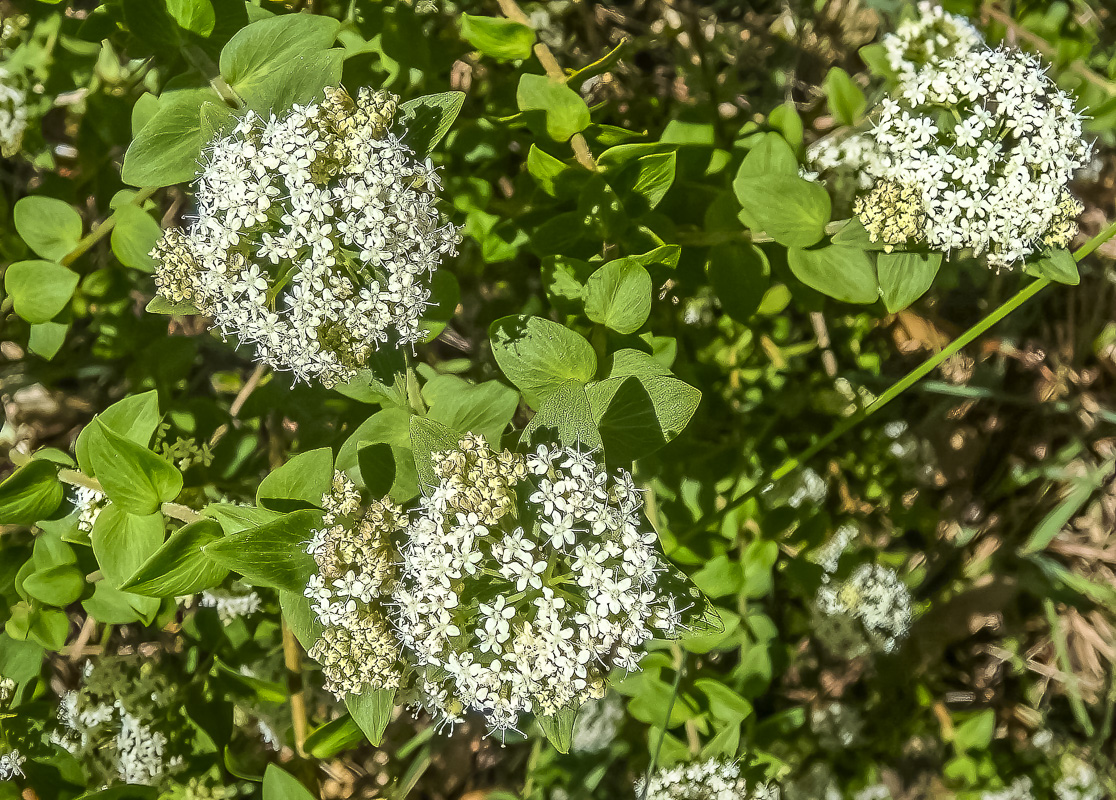
Platysace lanceolata – Terminal flowers, hardy and will take some shade, rounded shrub to 0.75m high

Rhodanthe anthemoides – Everlasting paper daisy flowers in summer, perennial, 50cm high by 30cm across, sunny position preferred. Many forms are available.
Grey flowers and/or grey foliage

Actinotus helianthi (Flannel flower) – Soft grey/white star shaped flowers in spring/summer, needs well drained sandy soil, to 1.2m high. Image Brian Walters

Poa labillardieri Eskdale – Small grassy clump, very hardy, great foliage contrast. image Heather Miles

Spyridium scortechinii – Woolly flowers in autumn/winter after brown buds, to one metre high, good cut flower.
Good luck in your adventure creating a native cottage garden.
 Australian Native Plants Society (Australia)
Australian Native Plants Society (Australia)